Letters from Lodi
An insightful and objective look at viticulture and winemaking from the Lodi
Appellation and the growers and vintners behind these crafts. Told from the
perspective of multi-award winning wine journalist, Randy Caparoso.
A practical definition of terroir and why it matters more than ever
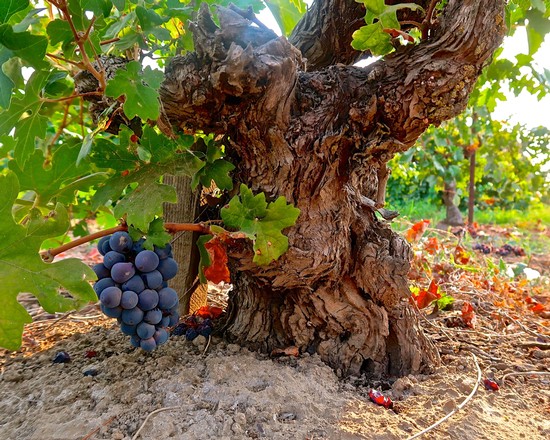
Süss Vineyard, a small architecture, 90-plus-year-old, gobelet trained, own-rooted vine grown in the low-vigor sandy soil of Lodi's Clements Hills AVA, producing a distinctively fragrant, notably high acid style of Zinfandel unique to the appellation.
It's hard to believe that as self-evident as it may seem to many wine lovers, there are actually many professionals in the wine industry, and even educational institutions, who do not believe terroir exists, or that it is important in the business of wine production or wine appreciation as it exists today.
Let's start with the premise that there is such a thing as terroir, and then afterwards, touch a little upon the perspectives of naysayers.
While you do not find the word terroir italicized everywhere you read about it, we tend to keep it that way out of respect for the word's origin, as a specifically French concept. The French can't help but harp on terroir. After over a thousand years of winegrowing, they have noticed direct impacts on the sensory qualities of wines resulting from differences in grapes or vineyards originating from well defined regions, vineyards, and even small sub-sections of plants found within individual vineyards (many of France's most prestigious vineyards are subdivided by numerous owners or producers, who find unique qualities in each tiny parcel).
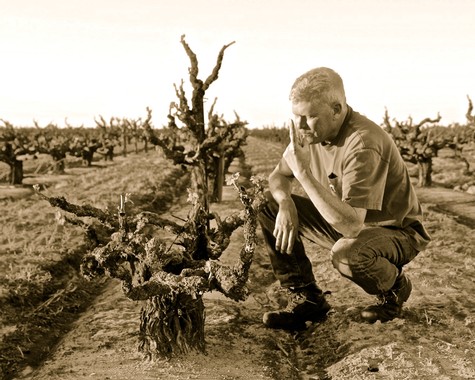
m2 owner/winemaker Layne Montgomery in Soucie Vineyard, is known for a full bodied, ripe, and ultra-earthy style of Zinfandel unlike any other in the Mokelumne River-Lodi AVA.
Any logical, or science-based, conclusion would have to be based upon demonstrable premises. In the case of terroir, it has been possible to delineate sensory distinctions based upon where grapes are grown, stemming from observations of wines when they have been made pretty much in the same way—and also as a result of methods of vineyard cultivation that have been more or less the same—across the board.
In the case of viticulture and winemaking in France, this has held true: Many of the long established or traditional procedures of grape growing and winemaking were baked into the French system of classifying the highest regarded regions and vineyards (i.e., AOC, or appellation d'origine contrôlée) first established in the early 1900s. Which is not to say that individual ways of farming or artistic leeway of winemakers are not permitted in the French system—they are, but within certain parameters set by AOC laws.
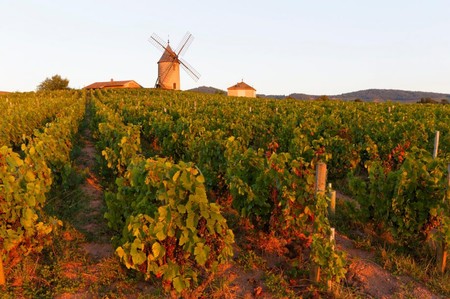
Moulin-à-Vent, a French AOC long known for one of the Beaujolais region's most distinctive wines reflecting a singularly unique terroir. decanter.com.
That said, the French conception of the word generally comes down to recognized natural environment-related factors—such as climate, soil, topography, aspect, elevation, latitude, etc.—that are known to have a direct effect on grape qualities, which invariably translates into specific sensory profiles of resulting wines.
Where the definition of terroir gets tricky is the fact that because vineyards, like wines, involve direct human participation—vineyards do not spring up by themselves, and neither are wines made and bottled by themselves—viticultural and winemaking traditions typical of regions or eras are often considered part of any region's or vineyard's terroir. Terroir is defined by places, as well as by methodologies associated with places.
The third facet of the term is that it is also applicable to the description of sensory qualities of wines when those perceived qualities can be attributed directly to the respective origins of grapes. Hence, the frequent parlance, that certain wines have a distinctive "sense of place"—the easiest and most accurate translation of terroir.
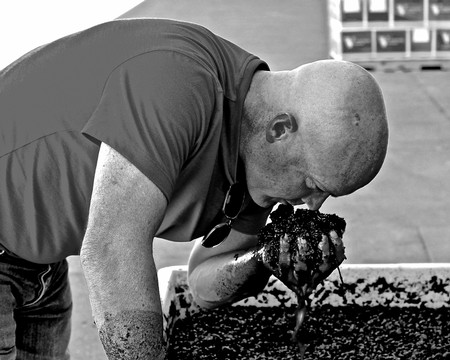
McCay Cellars' Mike McCay, one of Lodi's original Lodi Native project winemakers, is known for low intervention style Zinfandel focused on the taste, or terroir, of old vine vineyards.
The opposite of wines possessing a "sense of place" would be wines that are deliberately produced without, or with less regard for, sensory qualities resulting directly from vineyard origins. Most of the commercial wines available to consumers around the world, as a matter of fact, are made this way. Their tastes are not meant to reflect definable geographical origins. In the case of most of the world's commercial wines, a chosen style of a brand or producer usually takes precedence over where wines are grown. Why? because that's how most wines are sold—by a brand identification that a consumer can recognize and depend upon when making a purchase.
Moreover, in New World regions such as in the Americas or Down Under, much of the priority in terms of brand objectives is also focused on varietal character—that is, the expression of grapes (not vineyards) from which wines are produced. This is because New World wine regions are far younger than in European countries, and their markets have not yet evolved to a point where geographic or appellation-related distinctions are fully known or even appreciated in the taste of wines.
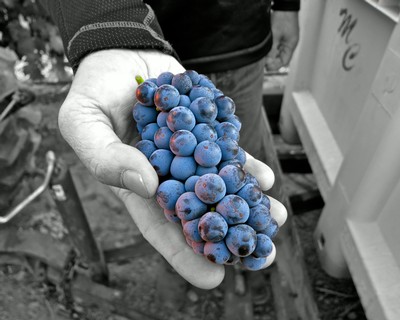
Zinfandel cluster picked in TruLux Vineyard, a west side Mokelumne River-Lodi growth known for a distinctively earthy, plummy style of wine strikingly reminiscent of earthy Southern French reds.
Most wineries in Napa Valley, for example, aim to produce varietal-labeled Cabernet Sauvignons that taste as much as possible like "Cabernet Sauvignon"; that is, a sensory profile meeting the expectations of most consumers of Napa Valley Cabernet Sauvignon. Most consumers of California wine still judge bottlings in terms of varietal definition, or sheer intensity thereof, as opposed to any kind of conception of "sense of place," even though a Napa Valley origin may also be important to these consumers.
Most of the appellation-identified wines of France, by way of contrast, are labeled by regions, villages, or individual vineyards, not by varietal content. When you buy a Beaujolais from France, for instance, there is no mention on the label that the wine is made from the Gamay noir grape, nor is that piece of information considered important. But in order for a wine to qualify to have "Beaujolais" on a label, a producer must source that wine from vineyards falling only within the well defined boundaries of Beaujolais, and these vineyards must be planted to Gamay noir.
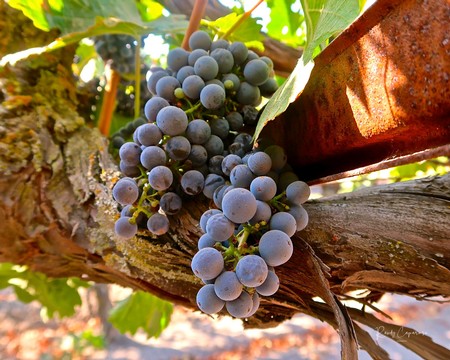
Cabernet Sauvignon is grown in the sandy soils of Mokelumne River-Lodi's west side for Michael David Winery, producing a style of this varietal that is notably softer and lusher than typical Napa Valley Cabernet Sauvignons.
Going one step further, many of the wines from higher ranked villages in Beaujolais do not even mention "Beaujolais" on the label—just the name of a village, such as "Morgon" or "Moulin-à-Vent." According to the logic of France's AOC laws, the best wines are best identified by where they are grown.
This is not to say brand style does not exist, or is not important, in France. One of Beaujolais's most successful producers, for instance, is well known for bottling numerous wines from a wide range of the region's top crus or ranked villages, and virtually all of these wines are known for a consistent sensory profile: one that is very ripe and fragrant to a point of lushness in terms of the Gamay noir fruit character. These wines are indeed subjected to something of a "house style"—akin to the type of branding achieved through consistent or predictable sensory qualities typically targeted by, say, California wineries—that is very important to this particular producer in Beaujolais, and also probably why this producer is enormously popular.
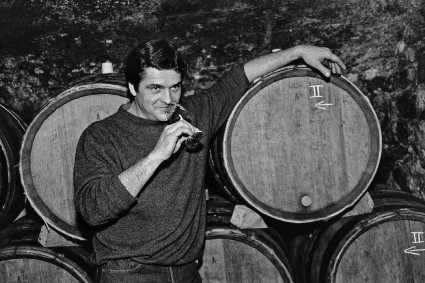
Guy Breton, one of the Beaujolais region's original "Gang of Four" vignerons, is legendary for minimal intervention wines meant to express vineyard-driven characteristics rather than the simple fruitiness largely associated with the appellation. wine.com.
On the other hand, there are a number of small producers in the Beaujolais region who reject any approach to wine production that could be perceived as branding or "house style." By and large, these producers follow more natural approaches to winegrowing and production (the French have recently established a bureau called Syndicat de Defense des Vins Naturels, which regulates wines qualifying for official designation such as Vin Méthode Nature).
Back in the 1970s and '80s when these alternative styles of Beaujolais first became known, these wines were considered so commercially contrarian that four of these producers became known as "The Gang of Four." The overriding objective of these would-be gangsters was to produce natural, or "naked," styles of Beaujolais crus that taste more like where they come from than how they are made, with as little human input as possible.
Of course, you can say that these wines do have some kind of input—they are the result of conscious decisions to minimize interventon. These producers, in other words, endeavor to achieve sensory distinctions that could be perceived more in terms of terroir than by branding, or grape (i.e., Gamay noir) intensity. Different strokes for different producers and wine aficionados—vive la différence!
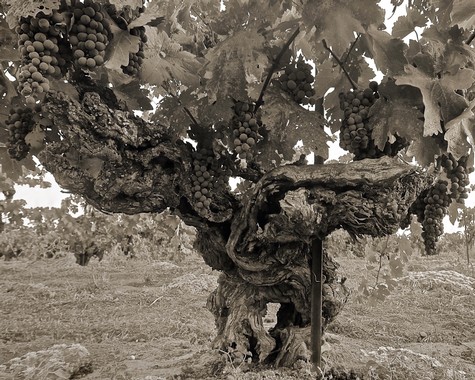
107-year-old, own-rooted Zinfandel in Kirschenmann Vineyard on the east side of Lodi's Mokelumne River AVA, distinguished by finely delineated, red fruit and multi-spice nuanced wines unique to this growth.
Evolution of terroir in California and its essence in Lodi's old vines
The Lodi appellation is easily the largest winegrowing region in the U.S., in terms of vineyard acreage and crush production, primarily because this region serves the following purpose: supplying most of the country's biggest wineries. We don't have to name names—you can see the nation's dominant brands when walking into any supermarket or beverage store in the country. These are the wines selling for anywhere from $3 to $30, which is what the vast majority of Americans drink.
Many of these "everyday" drinking wines do state "Lodi" on the label as an AVA (i.e., an official American Vitcultural Area), but most of the wines sourced from Lodi just say "California." Why? for the simple reason that it is more advantageous for most of the big producers—including, to use one example, Woodbridge by Robert Mondavi, despite the fact that this winery is based in Lodi and sources over 90% of its grapes from Lodi—to maintain the flexibility of blending grapes of other regions in their wines. Hence, most of Lodi's grapes go into "California" wines.
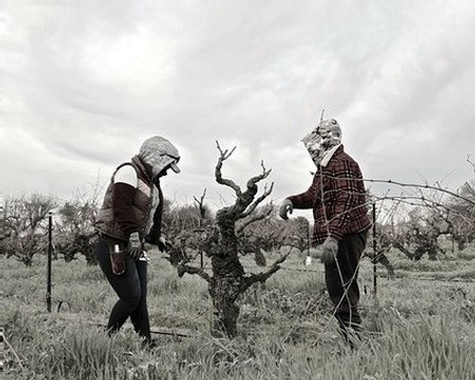
Winter pruning in Stampede Vineyard in the Clements Hills AVA, where the sandy riverside soils produce Lodi's most structured—in terms of heightened tannin/acid—style of Zinfandel, highly favored by a number of small, artisanal, low intervention style wineries.
Terroir, it almost goes without saying, is not a big priority in the production of the California appellated wines consumed by most Americans. This may explain why, in a book entitled Terroir and Other Myths of Winegrowing (University of California Press), a UC Davis Professor of Viticulture felt that he could conclude, on perfectly sound scientific grounds, that "terroir" is indeed a "myth." Not only that but not much more than a “shibboleth that establishes an in-group in a world unto itself... This isn’t wine appreciation… it is more like wine snobbery."
We could, however, say that the good professor's damning indictment can be faulted, or deemed misleading, in three easily demonstrable ways:
1. While most American wines do not prioritize sensory objectives entailing a "sense of place," this does not mean American wines that do express terroir-related qualities do not exist. When Descartes, after all, said "I think therefore I am," he was not implying that a skepticism of existence means nothing in life is really real. He was actually saying that many things probably exist, whether we are reasonably cognizant of everything or not. The author of Terroir and Other Myths of Winegrowing, in other words, is overthinking things. Terroir may not exist in his mind, but it sure as hell exists as a reality in the minds of countless wine producers—and aficionados of those wines—all around the world, California included.
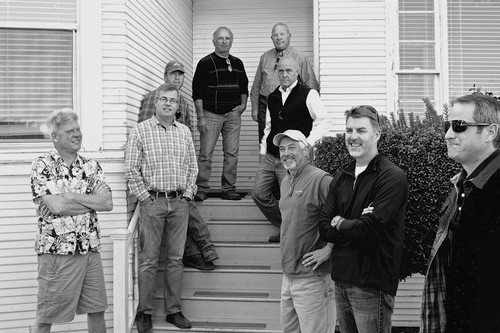
Nine of the original Lodi Native vintners and growers, who pioneered Zinfandels intended to express the characteristics of individual old vine vineyards rather than a varietal conception of "Zinfandel."
2. Even the most casual wine consumer can clearly taste irrefutable differences in American wines that can only be ascribed to differences in where grapes are grown. In Lodi, for instance, we know and expect a McCay Cellars Zinfandel from TruLux Vineyard to be full-bodied, very pungent in black, plummy fruit aromas, and also perceptibly earthy, in a loamy/mushroomy sort of way; whereas a McCay Cellars Zinfandel from Lot 13 Vineyard will come across as more finely delineated, more perfumed in red fruit aromas, and not earthy at all—and it's consistently that way in vintage after vintage. Why? Mostly because one Zinfandel comes from a vineyard on the west side of Lodi (TruLux), and the other comes from the east side (Lot 13). The producer and winemaking techniques may be exactly the same, but the wines couldn't be more different because of where they are grown. This, simply, is what terroir is all about, and you don't have to be a master of anything (except your own palate) to get that.
3. Generally speaking, there are no terroir-focused producers that we know of—such as the Beaujolais "Gang of Four," a McCay Cellars, a Turley Wine Cellars, or any of the participants in the Lodi Native Zinfandel project—who are endeavoring to perpetuate a "myth" or "shibboleth," and they are certainly not pursuing agendas tantamount to "snobbery" to pull off some kind of duplicitous caper. Most of these producers are, simply, prioritizing vineyard expression in their approach to achieve sensory distinctions in their products; nothing more, nothing less, and certainly nothing sinister or harmful to the rest of the industry.
I think, in fact, that Bob Dylan may have said it best: You don't need a weatherman to know which way the wind blows. As a wine lover, you utilize you own sensory faculties and common sense to make up your own damned mind.
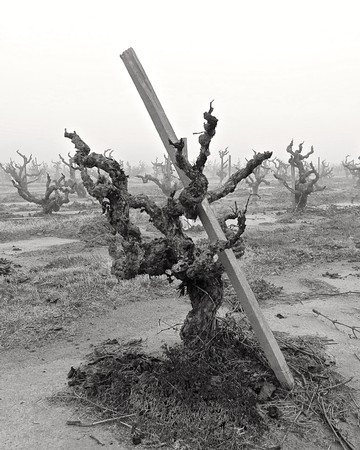
Marian's Vineyard, a quintessential, 121-year-old west side Mokelumne River-Lodi AVA Zinfandel famed for round, opulent styles of the varietal, different from Zinfandels grown in blocks located just a few feet away.
Simply put, we are now seeing more and more producers, even in the predominantly commercialized California wine industry, who produce wines that can easily be described in terms of sensory profiles reflecting the physical attributes of given regions or vineyards. Many of these wines could be described as natural in their approach, although that term "natural" in itself is far from an officially agreed-upon concept—the actual methodologies followed by many American producers who consciously follow so-called natural or minimal intevention approaches are as varied as the growing number of these producers.
Many of these artisanal American producers are indeed strongly influenced by traditional French thinking, and even inspired by specific historic movements such as "Gang of Four." They may not agree on the "right" way of doing anything, but they generally agree on one thing: They are looking for something beyond a branding or varietal-focused approach to commercial wine production; a standardization that has dominated the modern day era of the American wine industry since the 1960s and '70s.
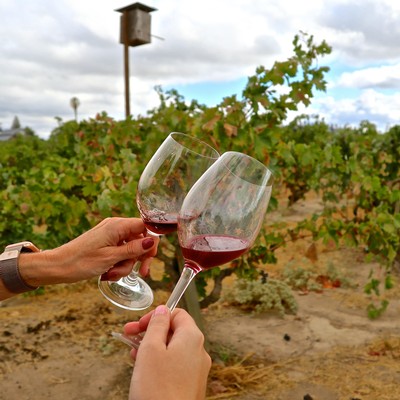
Recent tasting of newly fermented 2022 Marian's Vineyard Zinfandel in Marian's Vineyard—a chance to experience this 121-year-old growth's plump, round terroir-driven characteristics right at the source.
Another factor finding increasing significance in the consciousness of wine aficionados in California is the appreciation of old vines. Especially in Lodi, where there is more acreage of old vines—that is, vineyards planted over 50 years ago, primarily between the late 1800s and mid-1960s—than in any other region in California. Read all about this in the Lodi region's recent Save the Old campaign.
What's the big deal about old vines, what do they have to do with terroir, and why should you even care? To put it as simply as possible, vintners who work with old vines have found that the older a planting, the more likely wines from that planting are apt to express specific sensory qualities unique to that planting. In other words, increased "sense of place," i.e., terroir. Physiologically, it has a lot to do with deeper root systems, stronger vascular structures of plants themselves, plus the historical fact that older vines would not exist at all if, to begin with, these plants didn't produce wines of distinctive and commercially viable qualities. Otherwise they would have been pulled out long ago.
Older vines, in other words, exhibit value in terms of the product they produce; and as in all wines, that value is very much sensory. No question, the most distinctive terroir-focused wines grown in Lodi come from its oldest vineyards; such as those of Bechthold Vineyard (Cinsaut planted in 1886), Spenker Ranch (Carignan planted in 1900), Marian's Vineyard (1901 Zinfandel), Lizzy James (1904 Zinfandel), Rous (1909 Zinfandel), Kirschenmann (1915 Zinfandel), Soucie (1916 Zinfandel), and other growths of that ilk, planted over 90 or 100 years ago. Age before beauty.
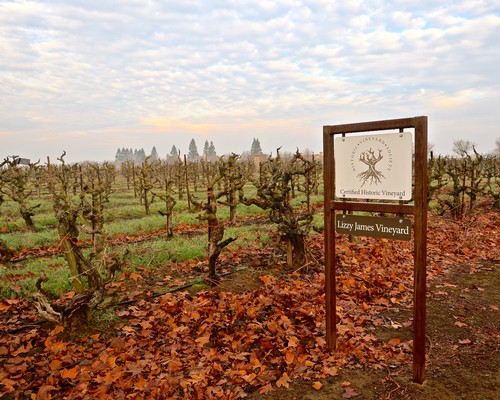
The Historic Vineyard Society-certified Lizzy James Vineyard is located in a beach sand-like pocket of Lodi's Mokelumne River appellation, consisting of ancient vines (over 100 years old!) that consistently produce Zinfandels with finely delineated red berry perfumes and sense of elegance pulled together by lively acidity.
Many producers specializing in old vine wines, in Lodi as well as in many other parts of California and elsewhere around the world, may not necessarily be targeting terroir as an objective. For the most part, they are simply trying to produce unique or individually defined products, in the same way any artist might approach a canvas or mound of clay. It's their schtick. Whether they embrace the concept or not, many of these handcrafted, artisanally motivated American vintners generally end up producing wines strongly influenced by terroir, or "sense of place," mostly because their products are byproducts of more minimal intervention, employed to maximize natural qualities of grapes. The basic attitude being: Why mess with it?
However which way these wines are fashioned, many of these new-fangled products are helping consumers better appreciate the factor of where wines are grown, whether made from old vines or newly planted vines. The premise being, location matters. This, in turn, has been helping entire emerging wine regions in America to define themselves and come into their own. It is significant, for instance, that consumers can now enjoy Lodi wines for specific sensory qualities that have come to be associated with "Lodi," in the same way that many others may prefer a Napa Valley wine because it tastes like it comes from Napa Valley, or a Willamette Valley or Santa Maria Valley wine because they taste like Willamette Valley or Santa Maria Valley.
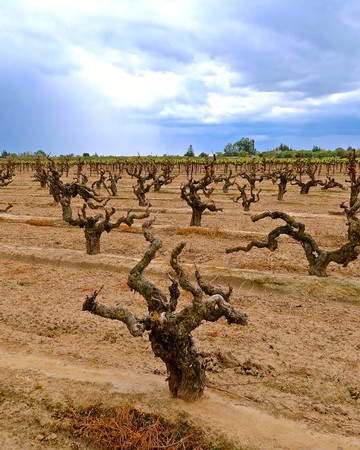
100-plus-year-old Zinfandel in Scottsdale Vineyard, a growth-producing wine with a specific fruit profile so distinctive that it has long been known as the "blueberry block."
Many consumers are joyfully inquisitive, professing minimal wine knowledge. But in general, they aren't stupid, and more and more of them are appreciating terroir, whether or not they are using that fancy French term to describe their preferences. They may not be able to verbalize specific sensory qualities that lead them to an appreciation of wines from Lodi, Napa Valley, Willamette Valley, or Alto Adige as opposed to Alsace, Russian River vs. Margaret River, but by making choices they are, in fact, embracing differentiations of terroir.
Which explains the most recent trends, or at least talk, about concepts such as old vines and "natural" (see another one of our recent posts, Lodi has become a new home for... natural wines!). If anything, these growing interests are bringing the concept of terroir more and more into the collective consciousness of American wine lovers. This phenomenon, be as it may, is nothing new. The French have been making a big deal about it forever. It's just that this "forever" is finally starting to catch on over here, across a continent and pond—even in Lodi!
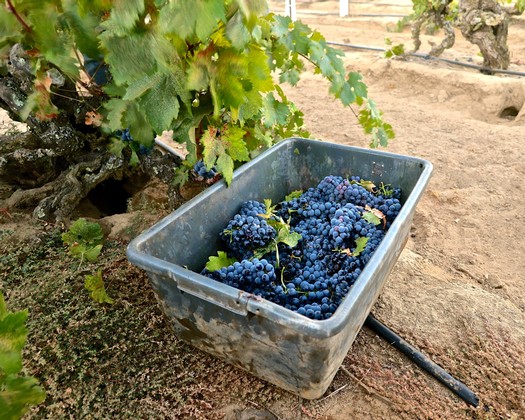
2022 harvest in Rous Vineyard, a 113-year-old, east side Mokelumne River-Lodi AVA growth known for full bodied styles of Zinfandel with distinctively floral/violet-like, green leaf and blueberry nuanced wines, very much unique to this vineyard.